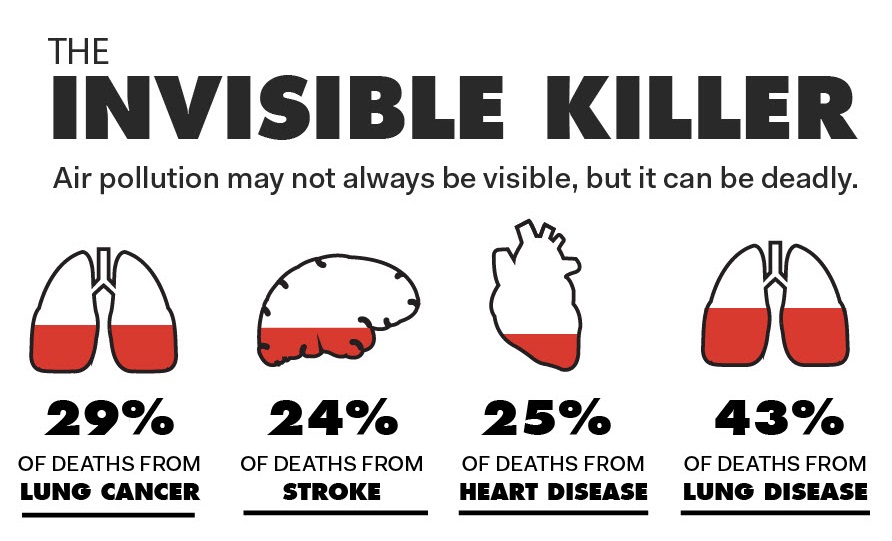
In recent years, air pollution and its impact on people’s health has become a significant issue on the global health agenda. Nine out of ten people worldwide breathe polluted air, which disproportionately affects those living in low-resource settings. According to a recent World Health Organisation report, more than twenty percent of all cardiovascular disease deaths are caused by air pollution—that’s more than three million deaths every year—and these numbers will continue to rise unless we, as a global community, take action.
The World Heart Federation is committed to reducing the impact of air pollution on people’s health and we have made it a priority area in our global advocacy efforts. At the World Health Assembly last month, we called on Member States to engage actively with the World Health Organization (WHO) and with Ministries of Environment, Transportation and Finance to implement the WHO strategy on health, environment and climate change at the national level, and we will reiterate this message at the upcoming UN High-level Meeting on Universal Health Coverage (UHC).
Our soon-to-be established Air Pollution Expert Group will help strengthen WHF’s work in this key area, and air pollution and its impact of people’s heart health will also be a key topic for discussion at ESC Congress together with the World Congress of Cardiology this August, where we expect more than 35,000 participants.
Time is running out. We must work together to ensure that our children can grow up in healthy cities, breathing clean air and living long, heart-healthy lives.
How does air pollution affect our hearts?
Air Pollution increases the risk of CVD largely through particulate matter 2.5 (PM2.5). PM2.5 are tiny particles with various composition of noxious substance that cross the alveolar barrier and either destroy endothelial cells directly or act through endocrine disruption causing either acute coronary syndrome, coronary artery disease and their risk factors such as hypertension, obesity and diabetes. In India, for example, most urban location have a poor air quality index with PM .5 levels well above the recommended limits. The highest ambient air pollution levels are in the Eastern Mediterranean Region and in South-East Asia, with annual mean levels often exceeding more than five times WHO limits, followed by low and middle-income cities in Africa and the Western Pacific. Reportedly 60% of Indian cities have PM2.5 levels above the National Ambient Air Quality Standards.
What we are doing to address this important issue
In its newly-approved Advocacy Strategy, WHF has committed to take action on three key areas to address the issue of air pollution and CVD: research, advocacy, and education. We have solicited the input of our Members in the formation of an Air Pollution Expert Group, and we thank you for your nominations.
As a growing global challenge, air pollution also presents WHF with a unique opportunity to promote physical activity and raise awareness about the link between air pollution and heart health. Through our ongoing collaboration with the World Health Organization (WHO), we are pleased to share resources such as the ACTIVE technical package, policy toolkit designed to help governments reduce our alarming levels of physical inactivity and the related health, social and economic consequences. By engaging with partners such as WHO to further explore the important intersection of air pollution, physical activity, and CVD, WHF can elevate the topic on the global health agenda.

